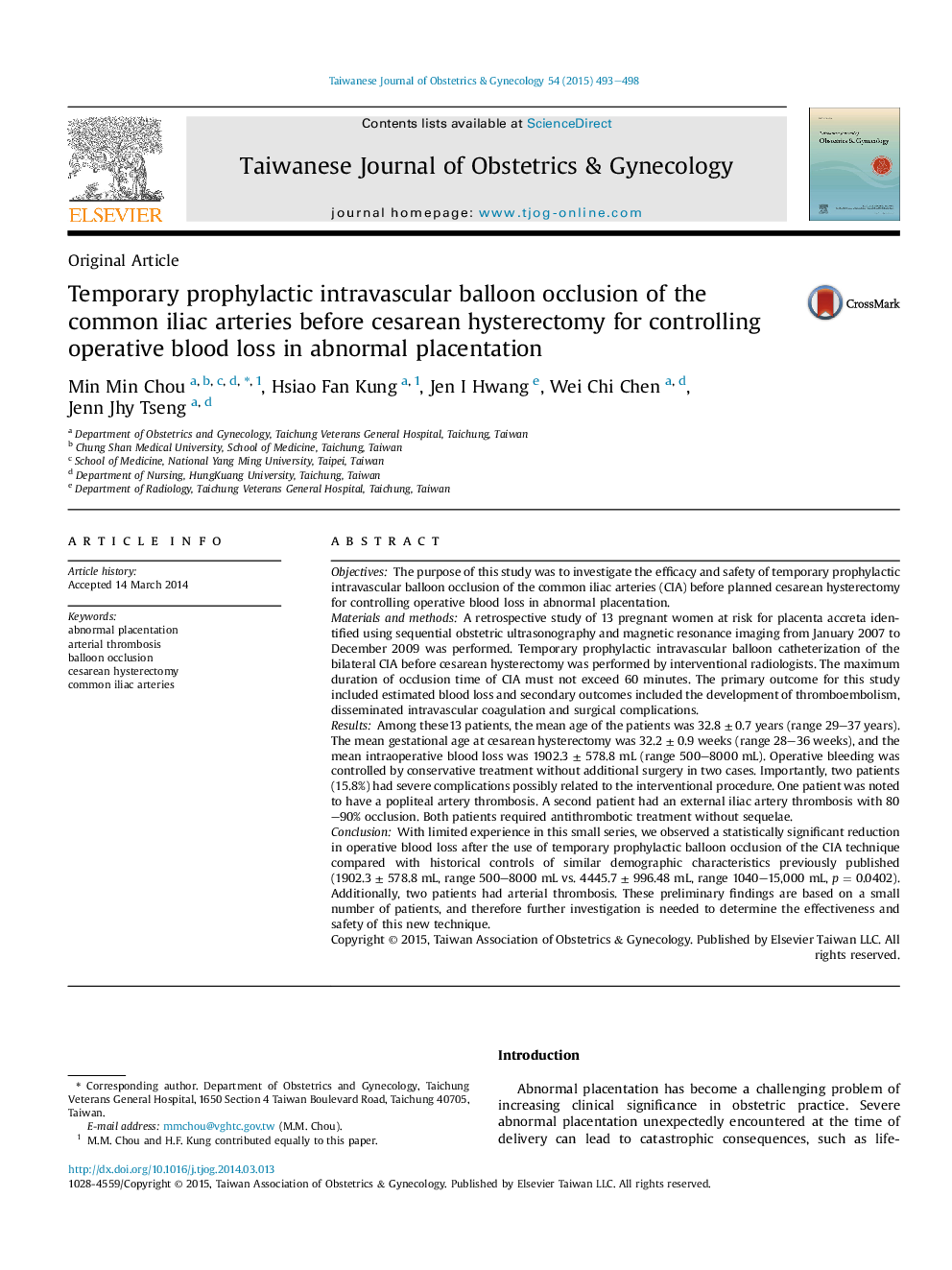| Article ID | Journal | Published Year | Pages | File Type |
|---|---|---|---|---|
| 3975466 | Taiwanese Journal of Obstetrics and Gynecology | 2015 | 6 Pages |
ObjectivesThe purpose of this study was to investigate the efficacy and safety of temporary prophylactic intravascular balloon occlusion of the common iliac arteries (CIA) before planned cesarean hysterectomy for controlling operative blood loss in abnormal placentation.Materials and methodsA retrospective study of 13 pregnant women at risk for placenta accreta identified using sequential obstetric ultrasonography and magnetic resonance imaging from January 2007 to December 2009 was performed. Temporary prophylactic intravascular balloon catheterization of the bilateral CIA before cesarean hysterectomy was performed by interventional radiologists. The maximum duration of occlusion time of CIA must not exceed 60 minutes. The primary outcome for this study included estimated blood loss and secondary outcomes included the development of thromboembolism, disseminated intravascular coagulation and surgical complications.ResultsAmong these13 patients, the mean age of the patients was 32.8 ± 0.7 years (range 29–37 years). The mean gestational age at cesarean hysterectomy was 32.2 ± 0.9 weeks (range 28–36 weeks), and the mean intraoperative blood loss was 1902.3 ± 578.8 mL (range 500–8000 mL). Operative bleeding was controlled by conservative treatment without additional surgery in two cases. Importantly, two patients (15.8%) had severe complications possibly related to the interventional procedure. One patient was noted to have a popliteal artery thrombosis. A second patient had an external iliac artery thrombosis with 80–90% occlusion. Both patients required antithrombotic treatment without sequelae.ConclusionWith limited experience in this small series, we observed a statistically significant reduction in operative blood loss after the use of temporary prophylactic balloon occlusion of the CIA technique compared with historical controls of similar demographic characteristics previously published (1902.3 ± 578.8 mL, range 500–8000 mL vs. 4445.7 ± 996.48 mL, range 1040–15,000 mL, p = 0.0402). Additionally, two patients had arterial thrombosis. These preliminary findings are based on a small number of patients, and therefore further investigation is needed to determine the effectiveness and safety of this new technique.
